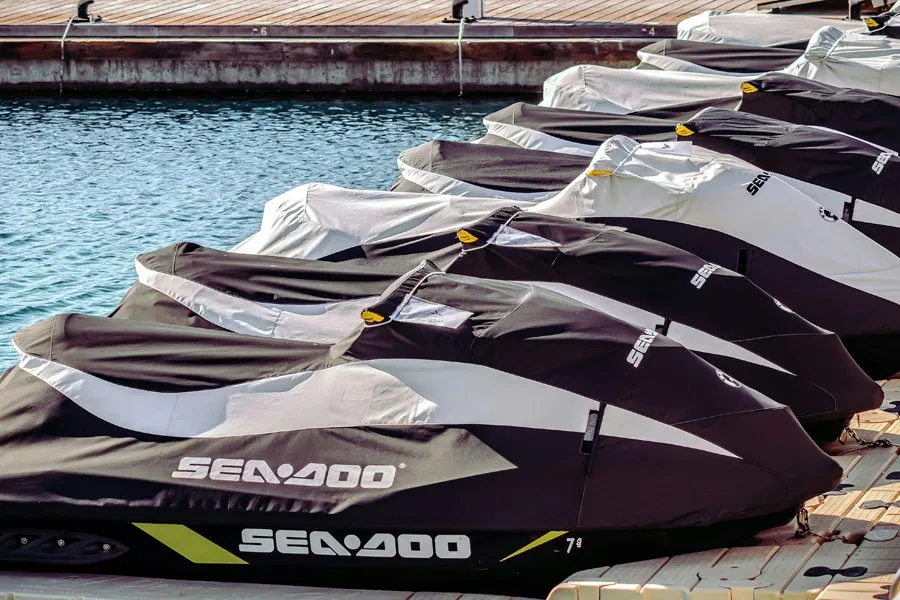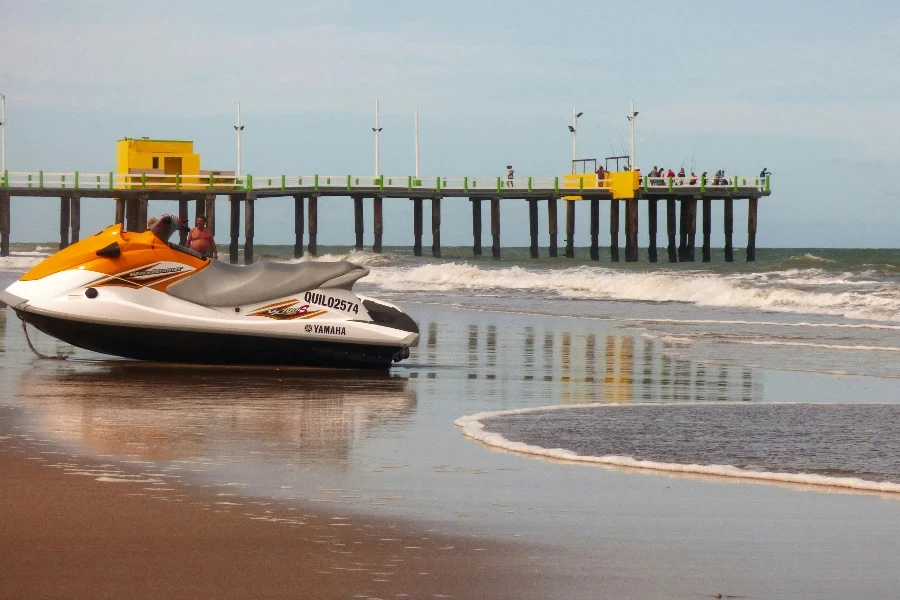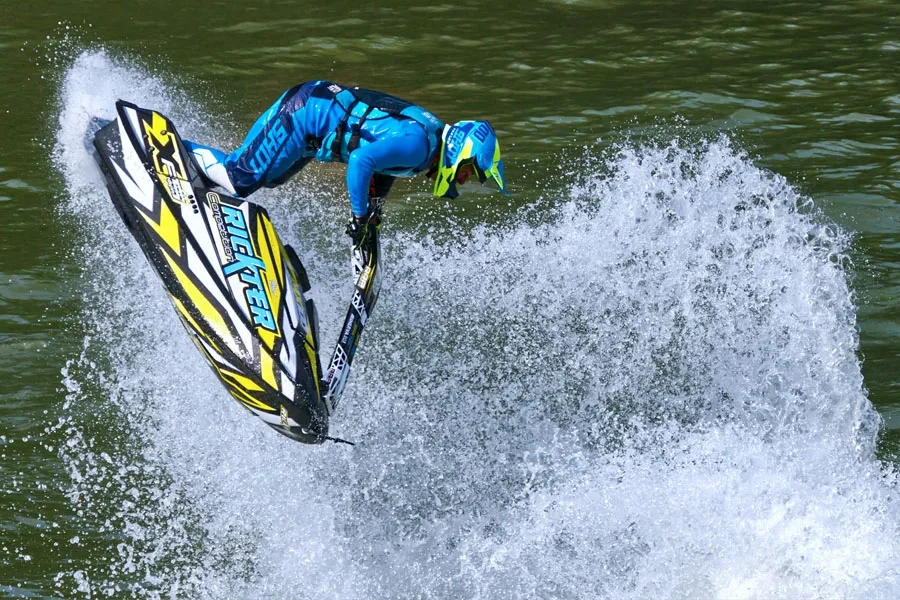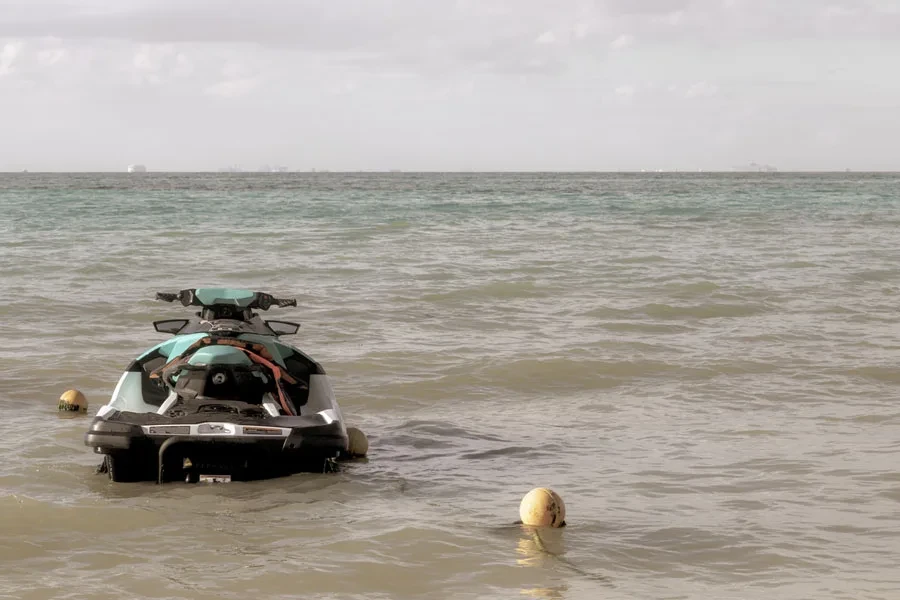When choosing jet skis for the 2025/26 season, one needs to know more than what the flashiest model is. Buying a jet ski is all about a balance between features, value, and performance, and this year’s jet ski lineup has a lot of exciting innovations to show off.
Keep reading to discover what to look for when choosing a jet ski and to explore our selection of the top models for 2025/26.

Table of Contents
Global market value of jet skis
Things to consider when selecting jet skis
The best jet skis for 2025/26
Kawasaki Jet Ski Ultra 310X
Yamaha FX Limited SVHO
Sea-Doo GTX Limited 325
Final thoughts
Global market value of jet skis

The jet ski industry has witnessed significant growth over the past several years. This growth comes as a result of consumers having more of an interest in recreational water sports such as paddle boarding, kitesurfing, and jet skiing. A rise in disposable income has also increased overall sales of jet skis globally.
By 2024, the global market value of jet skis exceeded USD 2.1 billion. This number is expected to increase by a compound annual growth rate (CAGR) of 6.62% between 2025 and 2032. This will bring the total market value of jet skis up to approximately USD 3.54 billion by the end of this period.
Things to consider when selecting jet skis

There are several key considerations that should be taken into account when deciding upon the best jet skis of 2025/26 to purchase. Factors such as how the jet skis will be used (casual fun or performance riding), engine power, seating capacity, and fuel efficiency are some of the most important. The agility and stabilization of the jet skis are also vitally important.
Beginners will prefer models that are used for recreational purposes, whereas more experienced riders will prefer stand-up jet skis or high-performance versions. Additional features such as Bluetooth speakers, cruise control, and GPS will greatly enhance the riding experience for everyone.
Buyers will look for reliability and support when choosing jet skis, so using reputable brands such as Kawasaki, Yamaha, or Sea-Doo is always a good decision.
The best jet skis for 2025/26

The standout performers in the jet skis industry in 2025/26 offer the perfect balance of features, innovation, and performance. Some models focus on cutting-edge technology whereas others have features that focus on luxury and high-performance.
According to Google Ads “best jet skis” had an average monthly search volume of 2900 in 2024. The most searches came in the summer months, with August performing the best, featuring 6600 searches. This was followed by July with 5400 searches and June and September both with 4400 searches each month.
Keep reading to find out which brands are set to provide the best jet skis in 2025/26.
Kawasaki Jet Ski Ultra 310X

One of the best jet skis in 2025/26 will be the Kawasaki Jet Ski Ultra 310X. Like all Kawasaki jet skis, this one packs a punch. It features a supercharged 1,498cc engine with 310 horsepower and the deep-V hull creates optimal stability and precision handling. The large 21.1 gallon fuel tank also makes it a great option for long-distance trips.
If that wasn’t enough, the new technology features are sure to entice potential buyers. The Jet Ski Ultra 310X offers GPS, Bluetooth smartphone connectivity, a 7-inch TFT display, and the ability to customize ride modes. This jet ski can comfortably seat three people, and it has 56 gallons of storage space too. It’s the only choice for people who enjoy high-performance and comfort all rolled into one.
Yamaha FX Limited SVHO

The Yamaha FX Limited SVHO delivers high-end performance, featuring speeds of up to 68 mph and a 1.8L Super Vortex High Output (SVHO) engine. The lightweight NanoXcel2 hull makes it ideal for cruising as well as high-speed runs as it allows the jet ski to maintain stability throughout all types of excursions. It also features an 18.5 gallon fuel tank so extended rides won’t be a problem.
The ergonomic seat design has a three-person capacity, and the smartphone integration as well as the 7-inch touchscreen display and GPS make it one of the most tech-savvy jet skis on the market. A unique feature of this Yamaha jet ski is the RiDe system that’s designed for intuitive braking and reserving.
Sea-Doo GTX Limited 325

The Sea-Doo GTX Limited 325 has emerged as a powerful contender among the best jet skis in 2025/26. It features the brand’s most powerful engine, the new 325-horsepower Rotax 1630 ACE engine, which delivers top-tier speed and quick acceleration. Its exceptional stability means that it can withstand very rough waters, and the 18.5 gallon fuel tank and 3-person seat design make it perfect for long-lasting rides and comfort.
Out of all of the Sea-Doo jet skis available, this one also has the best features. The 10.25-inch touchscreen offers Bluetooth, GPS, and app integration. The Intelligent Brake and Reverse (iBR) system, 26-gallon storage, premium audio system, and adjustable handlebars also make it one of the best choices for consumers wanting a high-end jet ski that combines power, convenience, and style all into one.
Final thoughts
Choosing the best jet skis in 2025/26 isn’t an easy task, with top brands such as Yamaha, Sea-Doo, and Kawasaki launching new models that offer a wide range of benefits and advanced technologies. Jet skis have become very versatile, so whether the buyer is a complete beginner or a seasoned rider, some features and designs will suit everyone, and the different models may even make jet skiing more appealing to water sports enthusiasts.



